If you feel like your children are in harm's way when it's time to feed your pet then you should read the training tips below. However, keep in mind that if your Pug is acting out in severe ways such as trying to bite or growl, consulting with a professional may be a better option.
Guarding possessions from humans or other animals is normal behavior for dogs. Wild animals who successfully protect their valuable resources—such as food, mates and living areas—are more likely to survive in the wild than those who don’t. However, we find the tendency to guard valued items undesirable in our domestic pets, especially when the behavior is directed toward people.
Some Precautions
If you think your dog is likely to bite you, please do not attempt to resolve his resource guarding on your own. Doing so could place you in serious harm, especially if your dog has a history of biting or has attempted to bite in the past. Consult with a Certified Applied Animal Behaviorist (CAAB or ACAAB) or a board-certified veterinary behaviorist (Dip ACVB).
With some dogs, treatment for food guarding can be tricky.
Stage One
• Stand a few feet away from your dog while he eats dry kibble from a bowl on the floor. Do not move toward your dog.
• Say something like, “What have you got there?” in a conversational tone and, at the same time, toss a special treat toward the bowl. Continue to do this every few seconds until your dog finishes eating his kibble.
• Repeat this exercise each time you feed your dog until he eats in a relaxed way for 10 meals in a row. Then you can move on to Stage Two.
During your exercises, if your dog leaves the bowl and moves toward you to ask for more treats, just ignore him. Wait until he goes back to his bowl and starts eating again before tossing more tasty treats.Stage Two
• While your dog eats dry kibble from a bowl on the floor, say “What have you got there?” in a conversational tone. At the same time, take one step toward him and toss a special treat toward the bowl. Then immediately step back. Repeat this sequence every few seconds until your dog has finished eating.
• Each day, take one step closer to your dog before tossing him the special treat. Continue at this stage until you come within two feet of the bowl. When your dog eats in a relaxed way for 10 meals in a row as you repeatedly approach and stand two feet away and give him a treat, you’re ready to move to the next stage.Stage Three
• While your dog eats dry kibble from a bowl on the floor, approach him saying “What have you got there?” in a conversational tone. Stand next to your dog’s bowl and drop a special treat into it. Then immediately turn around and walk away.
• Repeat this sequence every few seconds until your dog has finished eating. When he eats in a relaxed way for 10 meals in a row, you’re ready for the next stage.Stage Four
• While your dog eats dry kibble from a bowl on the floor, approach him saying “What have you got there?” in a conversational tone. After he eats the treat from your hand, immediately turn around and walk away. Repeat this sequence every few seconds until your dog has finished eating.
• Each day, bend down a little more when you offer your dog the special treat so that your hand moves an inch or two closer to his bowl.Stage Five
• While your dog eats dry kibble from a bowl on the floor, approach him saying “What have you got there?” in a conversational tone. Stand next to your dog, bend down and touch his bowl with one hand while offering him a special treat with your other hand.
• Continue to do this every few seconds until your dog has finished the food in his bowl. When your dog eats relaxed for 10 meals in a row, you can move to the next stage.Stage Six
• While your dog eats dry kibble from a bowl on the floor, approach him saying “What have you got there?” in a conversational tone. Stand next to your dog, bend and pick up his bowl with one hand. Raise it only six inches off the floor and drop a special treat in the bowl. Then immediately return the bowl to the floor so that your dog can eat from it.
• Continue to do this every few seconds until your dog has finished all the food in his bowl. As you repeat the sequence, raise the bowl slightly higher off the floor each time until you can lift it all the way up to your waist and stand upright.
• Repeat the sequence, but when you pick up your dog’s bowl, walk over to a table or counter with it. Then put a special treat into the bowl, walk back to your dog and return the bowl to the same place on the floor.Treatment Troubleshooting and Tips
• If you can’t feed your dog kibble for some reason, just make sure that the treats you offer by hand during exercises are more desirable to your dog than the food in his bowl.
• If your dog eats so quickly that you have few opportunities to offer better food during treatment exercises, buy a commercially available dish designed to slow down his eating.What NOT to Do
• Do not punish or intimidate your dog when he guards food. Some people insist that “dominating” your dog and showing that you’re stronger and able to take away his food will make him stop guarding it. On the contrary, doing so is dangerous and unnecessary. It can sometimes cause resource guarding to get worse, and it can damage your relationship with your dog. It’s easier and safer to simply change the way your dog feels about people approaching him when he has food through desensitization and counterconditioning.
Whatever you do, do not scold or get mad at your pup for being possessive over his food. This will only reinforce the fear that he is feeling, which is why he guards over his food already. Be patient and reward good behavior and work on the steps above.
If he gets stuck you may need to resort to getting him a behavior specialist. ASPCA also has more tips on how to help your pup overcome food aggression, so head on over to their site for more ways to counter condition your pooch.
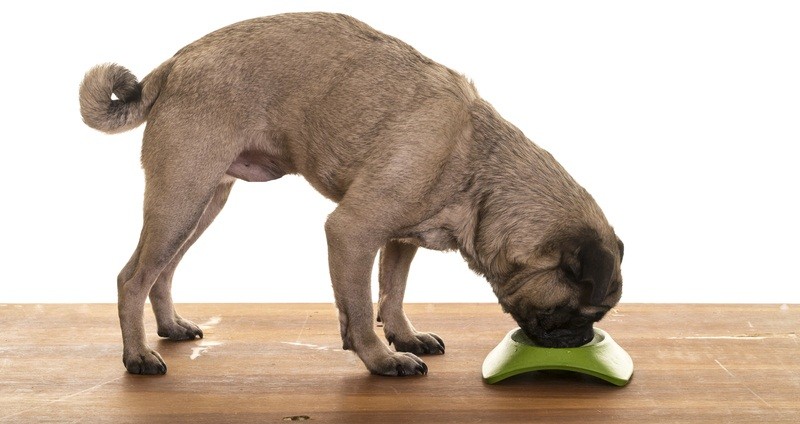
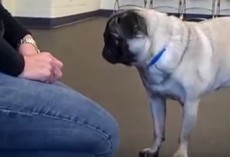
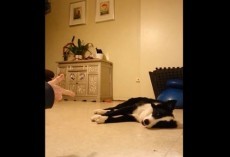
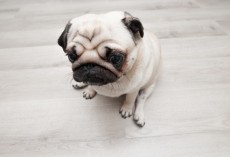


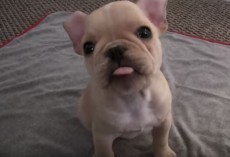

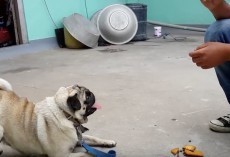

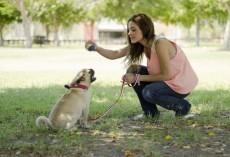
Wil Imhof
- Edit
Joyce Sicalides
Pariss Trim
- Edit
Daniel Elfy Eves